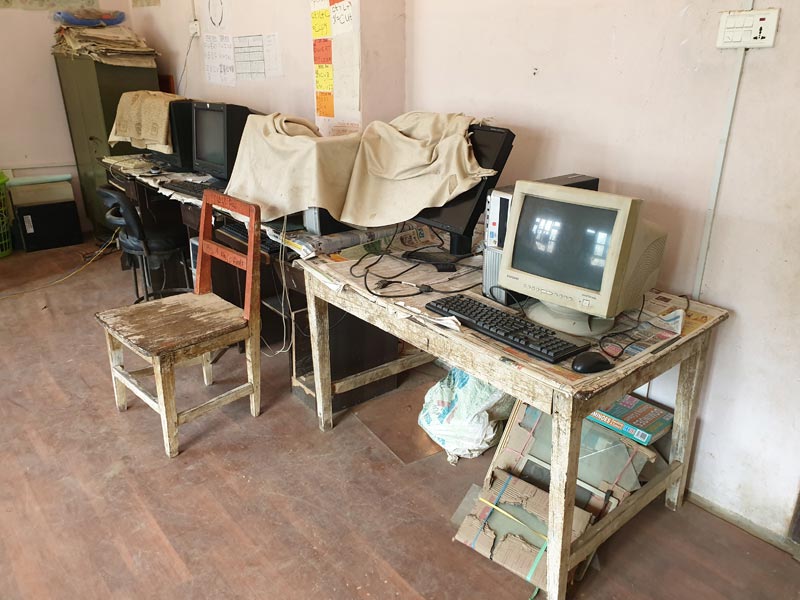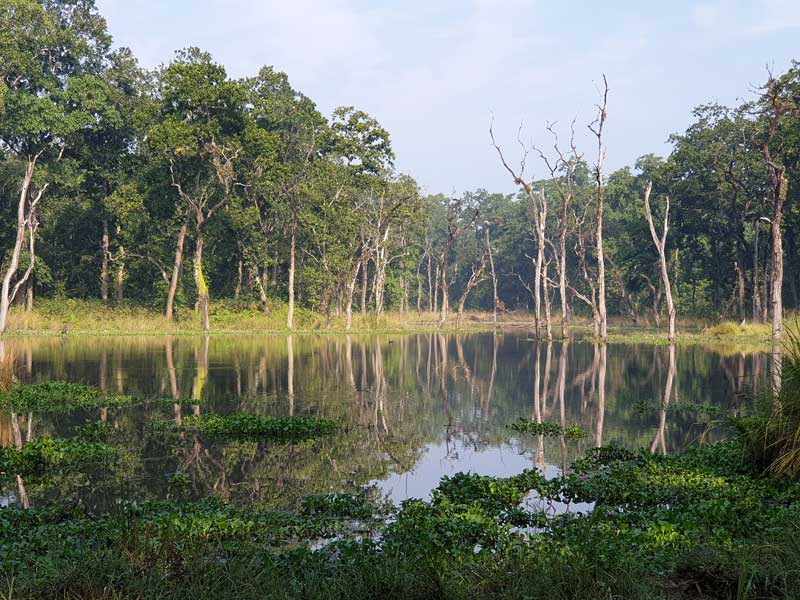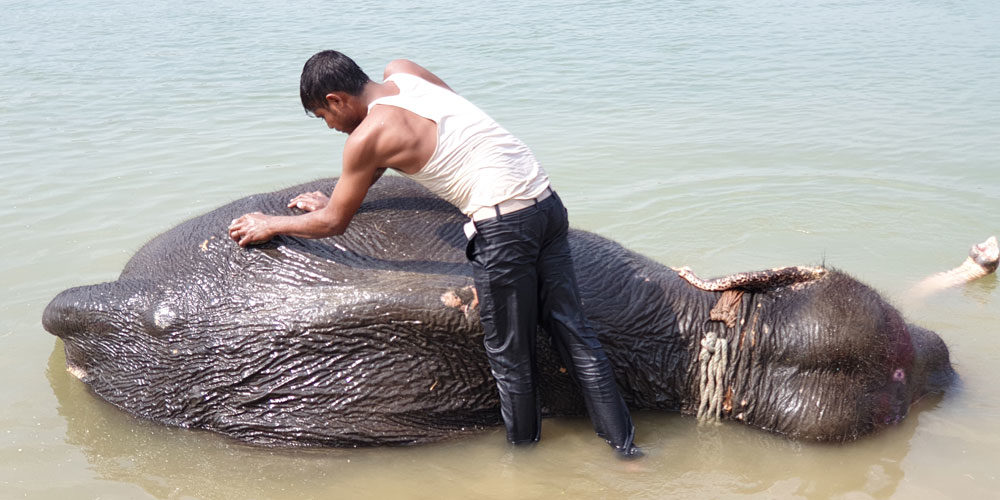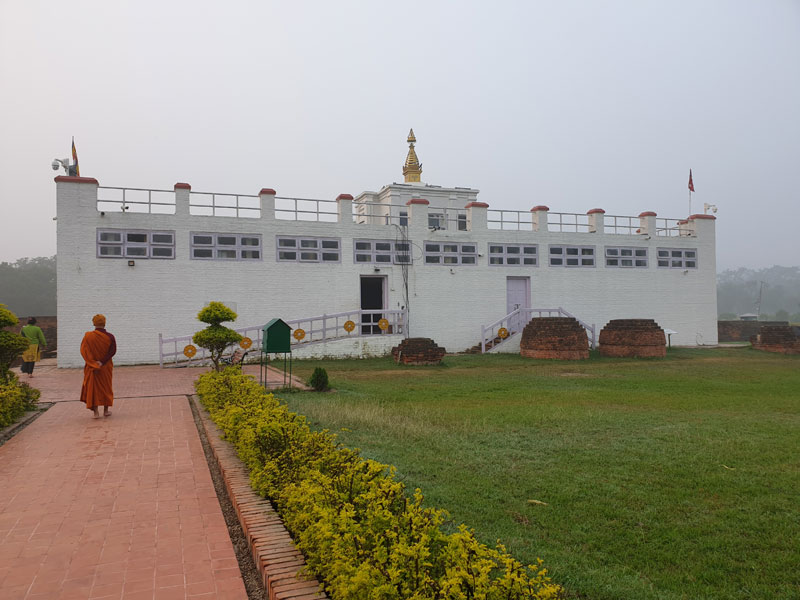I’m a 51-year-old overweight, white male from Adelaide who sits at a desk all day so I’m constantly surprised that people actually think I went trekking when I mention Nepal. Seriously – have you seen the size of those mountains? My stomach is a better comparison than the Adelaide Hills!
Nepal is steeped in history, culture and adventure, so it’s sadder than my fitness level to realise that no one seems to know what it has to offer other than trekking up the Himalayas or being rescued from Mt Everest. But guess what? I DID get up Mt Everest and I DID reach the peaks of the Annapurna Ranges of the Himalayas – all without breaking a sweat.
Nepal is a poor, developing country where teachers get paid as little as AU$75 per month. That means the Aussie dollar stretches far, not just from the currency conversion, but from the much lower prices. All-you-can eat meals for AU$4? Yes, please! Private drivers and English-speaking guides for AU$60 a day? Why not?! Comfy accommodation with breakfast for AU$16 per night? Way too expensive! You can go half that price if you want.
I’ve just returned from five weeks in Nepal. October is the most popular tourist month, with autumn temperatures averaging 25-29C each day. Similar temperatures in March/April also make their spring a popular time for tourists. From Adelaide, it’s a direct flight to Singapore then Kathmandu. Easy.
I trekked around the country by car and bus rather than on foot, living the high life both geographically and metaphorically. I visited temples and monasteries, experienced cultural tours, sat with monks, explored the birthplace of Buddha himself and, when I wasn’t delving deep into Hinduism and Buddhism, I was zip-lining, hot air ballooning, paragliding, boating, bathing elephants and discovering rhinos and tigers on safari. I took a helicopter 5.5km up Mt Everest, landing higher than the basecamp to discover what Altitude Sickness really feels like (it’s a woozy doozy that’s like being drunk!), and I flew in an open ultra-light aircraft around some of the highest mountains in the world.
Between these adventures, I spent two weeks in a remote Gurung village volunteering at a public school. Village life was significantly different from my own experiences and the culture shock was real! A local charity provided the books and school uniforms to the kids, who predominantly come from poor farming families. It was a time of cultural submersion and cold showers but I came out the other end so much more appreciative and aware of how lucky we are in Australia, yet also how much better my life could be by adopting some of their simple life philosophies. My first-world, white privilege was put to shame by their sense of community, respect and hospitality. The old adage is true that it seems to be those with the least who give the most, from their hospitality to their love. The friends I made in that short time will stay friends for life and the experiences of living in a village and teaching at the school are treasured memories.
Getting around in Nepal is quite easy – you can fly between major tourist points, hire a car and driver very cheaply, or take the bus. The latter is an adventure in itself – you’ll never complain about Adelaide drivers again! Just don’t try driving yourself: it’s organised chaos on the roads and, once you’re away from the heart of the cities, they can barely be called roads. Nepali people measure distance in time rather than kilometres because you often can’t go faster than 5km/hr on rural roads and 40km/hr on a ‘good’ road. Twenty kilometres will usually take you anywhere from 2-4 hours, depending on the roads in that area. Driving is the most fun off-road adventure you can have without actually being off-road! I travelled by jeep from Lakuribot to Barpak (the epicentre of the devastating 2015 earthquake) on a day trip and the 25km journey took us around five hours. ‘nuf said.
The food is very good and, although the water is not drinkable, bottled water is offered everywhere, often for free. I suggest you take a filtered re-usable bottle though, so you don’t add to Nepal’s serious pollution problem from plastic bottles. If you like a tipple, you’ll be joined by the locals and probably invited to sample their potent home brews! I’m a bit hazy about those experiences but I’m fairly certain there was more than one glass downed on most nights! Nepali people are incredibly generous so tipsy…err, I mean, tip generously – it helps them out a lot but will barely dent your budget.
I travelled solo, and Nepal was my first overseas trip as an adult. I stayed safe and felt safe the whole time I was traversing the country. I really have to thank local educational charity Friends of Nepal Adelaide, who put me in touch with Debendra Pokharel, the founder of hospitality school Cocina Mitho Chha in Kathmandu (you may remember I fundraised for scholarships for CMC earlier this year). Debendra organised a large portion of my holiday for me, including my teaching gig in the village, internal transportation, and provided a local’s insight into things to do and places to go. He was an extraordinary resource and epitomises the generosity and welcome I felt everywhere I went. I’m proud to call him a friend now.
I’m told a sports car is the way to hit a mid-life crisis but my entire five-week adventure cost less than AU$7,000. If I hadn’t opted to splurge on a helicopter up Mt Everest, the holiday would have come in well under AU$6,000. The memories and friendships made will last longer than any car, and for a fraction of the cost.
The Nepali government has declared next year to be a year to push tourism. Their Visit Nepal 2020 campaign will hopefully increase awareness of the plethora of adventures that await for even the most unfittest of us. It’s a country of contradictions, combining old and new, poor and privilege. It’s a place for all ages where you can find everything from museums and lakeside boating, to nightclubs, adventure sports, safaris, and cultural tours. Nepal also boasts the most liberal LGBTIQ laws in all of Asia although, as is often the case, the cultural acceptance is lagging behind the laws. Check out Pink Tiffany’s in Kathmandu for a hotspot however.
Our local tourist agencies are gearing up with new group tours to Nepal, or you can organise your own with the help of people like Debendra at CMC. For a poor country, I found the tourism industry to be well-controlled and safe. None of my mid-life crisis involved shonky backyard jobs or rickety setups.
If good things come in small packages, the tiny country of Nepal is the real deal. I’ll see you back there.













































